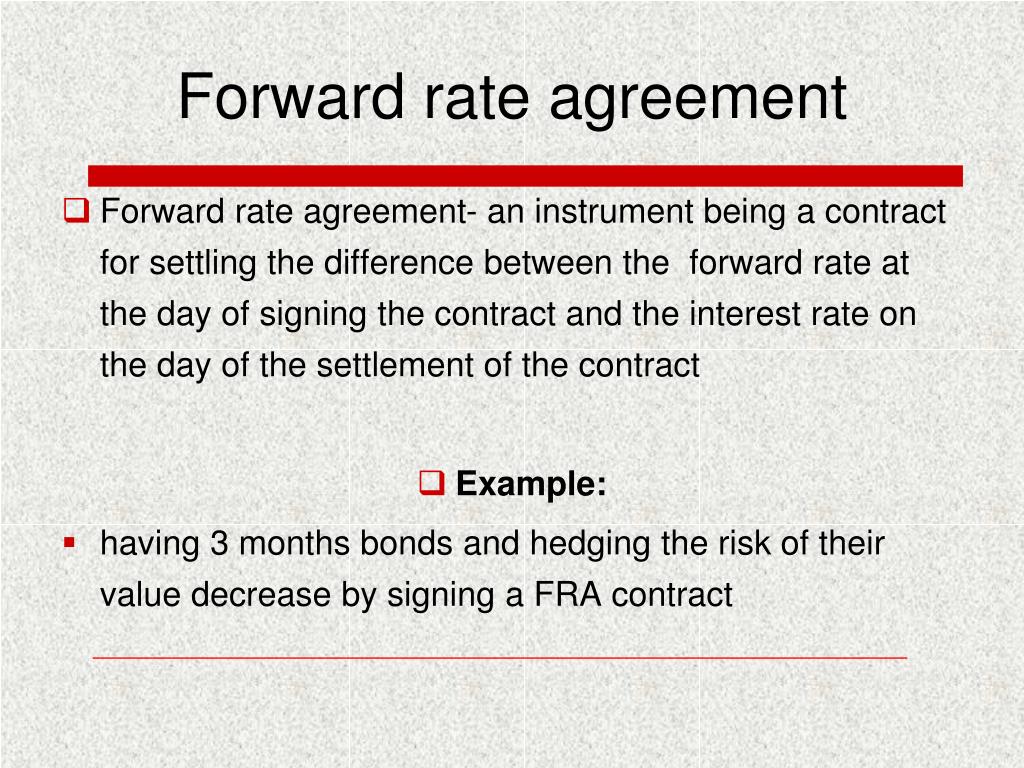

In addition, FRA’s are often based on the LIBOR rate, and they represent forward rates, not spot rates.

It’s important to note that there are no principal cash flows as the principal is a notional amount.įRA contracts are over-the-counter (OTC), meaning that the contract can be structured to meet the user’s specific needs.

Since FRAs are cash-settled on the settlement date – the start date of the notional loan or deposit – the interest rate differential between the market rate and the FRA contract rate determines the exposure to each party. For example, a German bank and a French bank might enter into a semiannual forward rate agreement contract where the German bank will pay a fixed rate of 4.2% and receive the floating rate on the principal of €700 million. On the other hand, the seller enters into the contract to protect himself from any future decline in interest rates. By entering into an FRA, the parties agree on an interest rate for a stated period starting on a future date, based on the specified principal amount at the contract initiation.Ī forward rate agreement buyer enters into the contract to protect himself from any future increase in interest rates. This helps in protecting investors from volatility in future interest rate movements. They allow participants to make a known interest payment at a later date and receive an unknown interest payment. A forward rate agreement (FRA) is ideal for an investor or company who would like to lock in an interest rate.


 0 kommentar(er)
0 kommentar(er)
